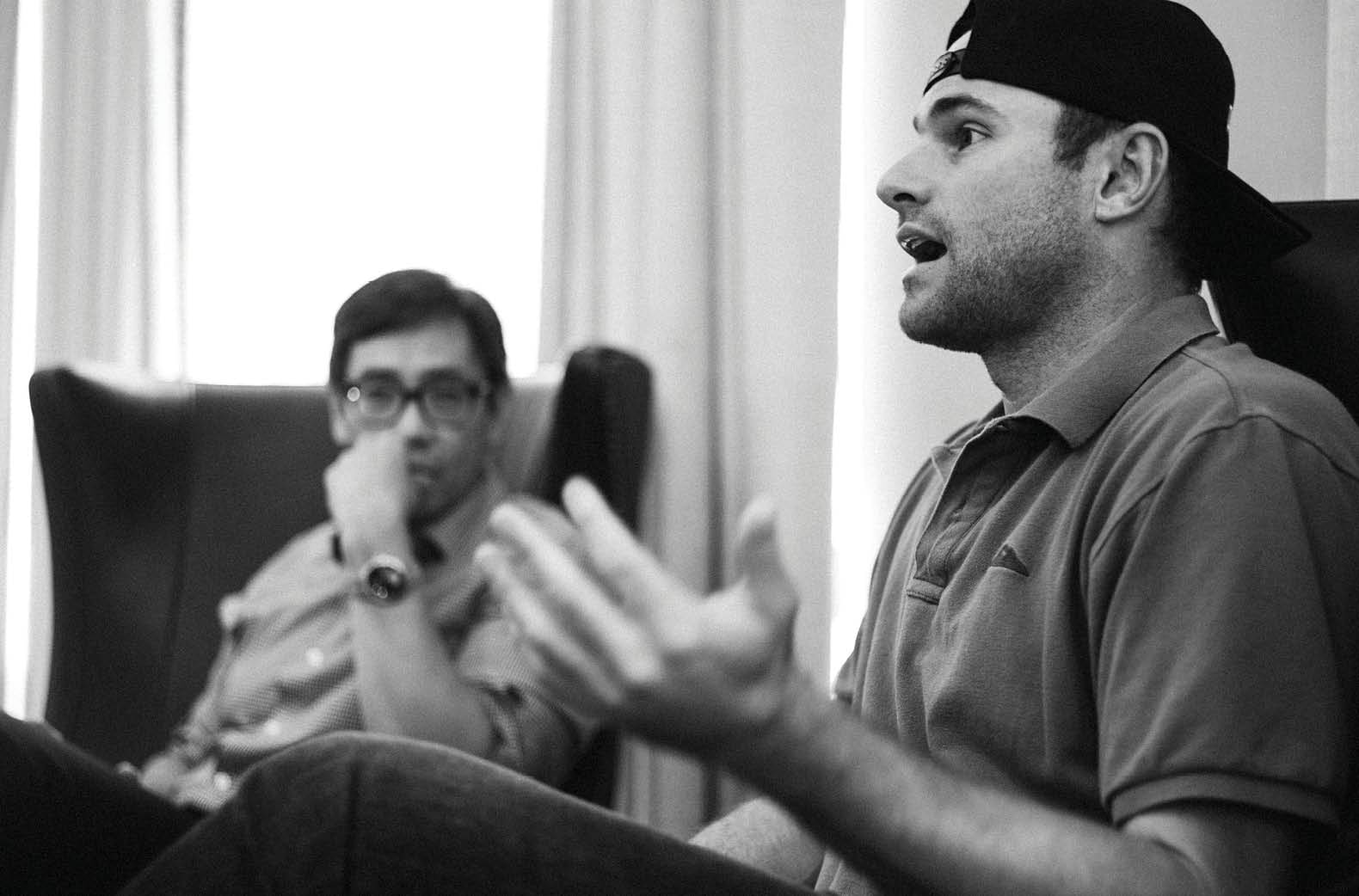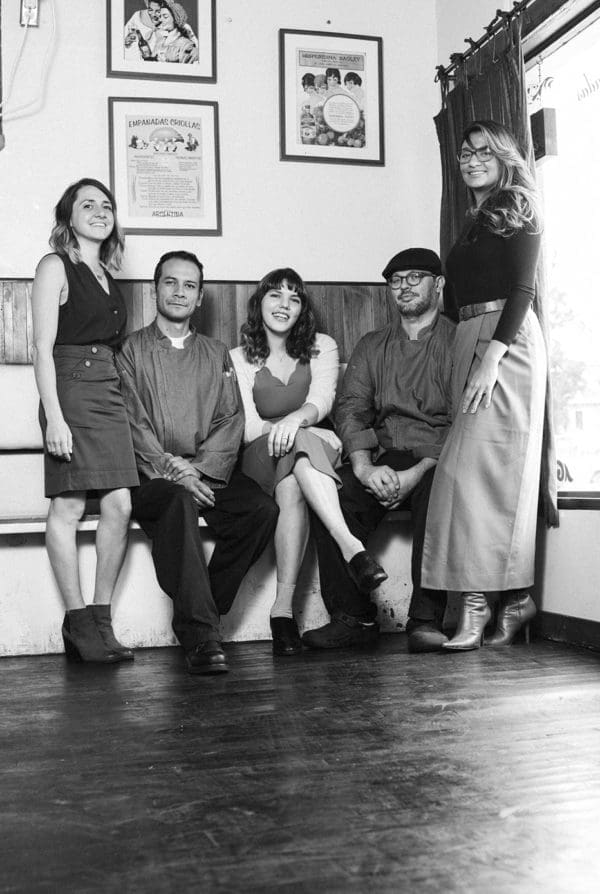Core of Community

At Andy Roddick Foundation, Education Begins After School.
Words by Jessi Devenyns Photos by Eric Morales & Courtesy of Andy Roddick Foundation
Andy Roddick Foundation (or ARF), children are viewed as the core of communities where the continued reinforcement of their education and experience is the key to prosperity. The idea is not so much to intervene but rather to educate by bringing the world’s opportunities to children who are at risk of becoming no more than a hash mark in the government’s registry.
“Basically, we wanted to [begin impact] as early as possible so we [work with] pre-k to 5th grade. We wanted to [start] them early because we found that very few opportunities existed at the elementary level,” says Richard Tagle, CEO of ARF. Furthermore, out of the 187 programs that do exist for students, “When you look at Austin’s Eastside, there’s really just two big [after school] programs,” he laments. The only two programs available run through Austin Parks & Recreation Department and the Boys & Girls Club, which have proven their commitment to a long-term investment in our community and which the ARF holds as examples of exemplary out-of-school education efforts.
Needless to say, it was an easy decision to jump in and help, but the question was, “How? Do you go really deep with hundreds of kids or do you sprinkle dust over thousands of kids?” muses founder Andy Roddick. Although Roddick notes that it’s “a lot easier to sell” the idea of casting your net of resources widely, the ARF chose “to go deep” and strive to form impactful and meaningful relationships with each child they encounter. However, to weave themselves into the fabric of the community, the question still remained, “Where do we start?”
In the end, the answer was the simplest solution. The ARF decided to invest in the programs that already existed to bolster that which was familiar in the neighborhood, rather than duplicate the efforts. Unsurprisingly, they decided to forge a partnership with Austin Parks & Recreation and Austin Independent School District.
Harris Elementary was the first school that came on board, followed by Pecan Springs Elementary, and next summer Hart Elementary will be the third partnership pursuit. The latter two schools were selected because they had finished their cycle of 21st Century Community Learning Centers grants, and “there were challenges with what to put there,” according to Tagle. Although the ARF was willing to step in and offer programming, Tagle says, “It’s not as easy as it sounds. When we originally introduced this idea of school partnerships, we went to a handful of schools…and it’s not always an open door.” Nevertheless, through persistence, Roddick says that they were able to translate their desire to offer programs with lasting impact into a reality.
Roddick elaborated that the foundation doesn’t strive to merely open children’s eyes to the wealth of occupational possibilities that they can pursue. “We’re problem-solving more than just enriching a child’s life and educating a child. It’s a support system for the entire family,” he explains. With both their after school and summer programming, parents can work 3 to 4 hours longer every day, which multiplied by 365 days, those hours can make a significant difference in a family’s future.
During after school hours and summer programs, kids are introduced to sushi making, pottery, and opera as well as offered athletics courses, academic support, and social/emotional enrichment to help them discover their passion. By extending a menu of opportunities in which the children can immerse themselves, Roddick adds that he hopes to encourage epiphanies where kids think, “I’m good at this, it makes sense, I feel good about myself because I’m good at this.” However, Roddick admits that this message can be difficult to convey to parents conditioned to view college as the natural path to success. In reality, a good indication of success comes from the curiosity cultivated within children at a young age. “It’s exposing them to different opportunities as well as creating an unbelievable base foundation in tech literacy, financial literacy, and dabbling in STEM. I think that you should try to cultivate the entire child,” Roddick remarks.
Tagle describes that coupling this buffet-style approach with the Foundation’s strong focus on social/emotional learning – a push from AISD superintendent Dr. Paul Cruz – is what allows their programming to seamlessly compliment that which the children experience during school.
But, even the best laid plans can be for naught without consistency. In particular, Roddick laments that many East Austin schools have suffered greatly from a pattern of unpredictability in out-of-school education programs. “There’s been a history of leaving. People come in, they promise all of these things, and then they’re gone in a year or two,” he says matter-of-factly. The ARF, on the other hand, makes consistency their number one priority. For those who work there, consistency is synonymous with quality. Tagle elaborates on this philosophy, which he simply refers to as responsibility. “As long as we are producing the outcomes that help the students, their families, and the schools, we’ll continue.” In their current model, the Foundation solidifies partnerships for 3-year terms which have an option to be renewed indefinitely.
By 2020, ARF hopes to be partnered with 5 schools and serve 3,000 kids daily in East Austin. Currently, there are 1,500 kids benefiting from their out-of-school programming. Whether at one of the three partner elementary schools or among the 11 different sites that ARF runs with Austin Parks and Rec, the quality of the foundation’s programs are readily apparent. From training to curriculum to measurement Tagle explains that the design of the out-of-school programming is methodically crafted to complement the context in which it is offered.
As an avenue of discovery for children, ARF strives to lead by example but similarly be a good partner to its supporting institutions. Although Roddick believes that this is the most thorough methodology to ensure long-term success for the children the foundation serves, he admits it’s not always “sunshine and rainbows.”
Nevertheless, the rewards are clear, although they don’t necessarily come from the expected source. According to Roddick, the best conversation he had was at Pecan Springs last year when a 30-year veteran janitor walked by and noted, “I’ve been here a long time, and I’ve never seen this place the way it is the last couple years. I’ve never seen the impact; I’ve never seen the kids happier; I’ve never seen it as organized; I’ve never seen the kids stop and say ‘hello’ as much as they are.”
“That unsolicited conversation,” admits Roddick, is how he knows that this work is not only changing children’s outlooks but also sending ripples through the community to create a more supportive, cohesive environment for everyone involved in enriching the children who are at the core of this community.
21st Century Community Learning Centers Program grants were established by Congress to award grants to rural and inner-city public schools in need of extra learning centers that provide academic enrichment opportunities during non-school hours for children. They are the only federal funding source dedicated exclusively to after school programs.
Contact:
(512) 298-1960 8509
FM 969, Bldg. 509
arfoundation.org
@thearfoundation










